| Date | Text | |
|---|---|---|
30 Nov 1889

Francis Galton |
Francis Galton (biology) Francis Galton announces a statistical demonstration of the uniqueness and classifiability of individual human fingerprints. |
|
30 Nov 1889
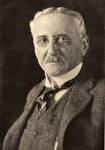
Jacques Loeb |
Jacques Loeb (biology) Jacques Loeb publishes his first major work on tropism, Der Heliotropismus der Thiere und seine Uebereinstimmung mit dem Heliotropismus der Pflanzen. |
|
30 Nov 1889

Henry Luke Bolley |
Henry Luke Bolley (biology) Henry Luke Bolley at the new North Dakota Agricultural College isolates the organism responsible for potato scab and develops an effective treatment. |
|
30 Nov 1889
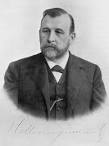
Nikolai Menshutkin |
Nikolai Menshutkin (chemistry) Nikolai Menshutkin discovers that a tertiary amine can be converted into a quaternary ammonium salt by reaction with an alkyl halide – the Menshutkin reaction. |
|
30 Nov 1889

Emil Fischer |
Emil Fischer (chemistry) Emil Fischer establishes the stereochemistry and isomeric nature of the sugars by epimerization between gluconic and mannonic acids and synthesizes glucose, fructose and mannose from glycerol. |
|
30 Nov 1889

Boise, Idaho |
Boise, Idaho (earth sciences) The United States city of Boise, Idaho, drills the first geothermal well. |
|
30 Nov 1889

phosphate mineral |
phosphate mineral (earth sciences) The phosphate mineral messelite (from Messel in Germany) is first described. |
|
30 Nov 1889

Philippa Fawcett |
Philippa Fawcett (mathematics) Philippa Fawcett is placed above the Senior Wrangler in the Mathematical Tripos at the University of Cambridge in England. |
|
30 Nov 1889

P. J. Heawood |
P. J. Heawood (mathematics) P. J. Heawood proves the five colour theorem. |
|
30 Nov 1889
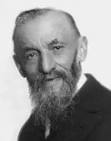
Giuseppe Peano |
Giuseppe Peano (mathematics) Giuseppe Peano is the first to demonstrate a space-filling curve. |
|
30 Nov 1889

Emil von Behring |
Emil von Behring (medicine) Discovery by Emil von Behring and Kitasato Shibasaburō that an anti-toxin for immunizing people against diphtheria can be prepared by injecting diphtheria toxin into animals. |
|
30 Nov 1889

Curt Schimmelbusch |
Curt Schimmelbusch (medicine) Curt Schimmelbusch invents the Schimmelbusch mask for the safe delivery of anesthetics to surgical patients. |
|
30 Nov 1889

Santiago Ramón y Cajal |
Santiago Ramón y Cajal (medicine) Santiago Ramón y Cajal publishes the first edition of Manual de Anatomia Pathologica General. |
|
30 Nov 1889
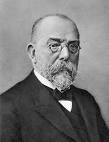
Robert Koch |
Robert Koch (medicine) Robert Koch publishes his postulates on the causal relationship between microbes and diseases. |
|
30 Nov 1889

William James |
William James (medicine) William James publishes The Principles of Psychology. |
|
30 Nov 1889
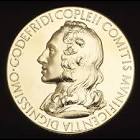
Copley Medal |
Copley Medal (awards) Copley Medal: Simon Newcomb |
|
30 Nov 1889
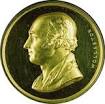
Wollaston Medal |
Wollaston Medal (awards) Wollaston Medal for Geology: William Crawford Williamson |
|
17 Jan 1890
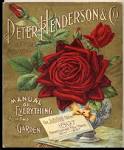
Peter Henderson |
death Peter Henderson Died 17 Jan 1890 at age 67 (born 9 Jun 1822). Scottish-American horticulturist known as the “Father of American Horticulture.” He learned methods of gardening in the Old World, then immigrated to the U.S. in 1843. He started market gardening in 1847 with a capital of $500.00. The publication Gardening for Profit (1868) was the first American book devoted entirely to market gardening and it encouraged many to enter the business. His seed business was started in 1865. Few men have done more to simplify the handling of plants for commercial use. His greenhouses were models for his many visitors and his methods were widely copied. He also wrote Practical Floriculture (1868) for commercial floriculture, and later, for the amateur audience, Gardening for Pleasure (1875). |
|
03 Feb 1890
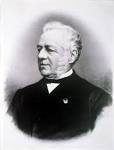
C. H. D. Buys Ballot |
death C. H. D. Buys Ballot C. H. D. Buys Ballot (born 1817), Dutch meteorologist. |
|
11 Mar 1890
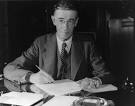
Vannevar Bush |
birth Vannevar Bush Vannevar Bush (died 1974), American science administrator. |
|
31 Mar 1890

Sir Lawrence Bragg |
birth Sir Lawrence Bragg Born 31 Mar 1890; died 1 Jul 1971 at age 81. William Lawrence Bragg was an Australian-English physicist and X-ray crystallographer who at the early age of 25, shared the Nobel Prize for Physics in 1915 (with his father, Sir William Bragg). Lawrence Bragg formulated the Bragg law of X-ray diffraction, which is fundamental for the determination of crystal structure: nλ = 2dsinθ which relates the wavelength of x-rays, λ, the angle of incidence on a crystal, θ, and the spacing of crystal planes, d, for x-ray diffraction, where n is an integer (1, 2, 3, etc.). Together, the Braggs worked out the crystal structures of a number of substances. Early in this work, they showed that sodium chloride does not have individual molecules in the solid, but is an array of sodium and chloride ions. |
|
01 May 1890

Herbert Akroyd Stuart |
Herbert Akroyd Stuart (technology) Herbert Akroyd Stuart, in collaboration with Charles Richard Binney and Richard Hornsby & Sons, files a British patent for Improvements in Engines Operated by the Explosion of Mixtures of Combustible Vapour or Gas and Air, the first successful design of hot bulb engine, which will be produced as the heavy-oil Hornsby-Akroyd oil engine. |
|
04 May 1890

Carl Brigham |
birth Carl Brigham Carl Brigham (died 1943), American pioneer of psychometrics. |
|
01 Jun 1890
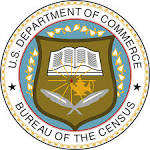
United States Census Bureau |
United States Census Bureau (computer science) The United States Census Bureau begins using Herman Hollerith's tabulating machine to record census returns using punched card input, a landmark in the history of computing hardware. Hollerith's company eventually becomes IBM. |
|
10 Jun 1890

Grass catcher |
Grass catcher In 1890, black American inventor Daniel Johnson received a patent for "Grass Receivers for Lawn Mowers" (U.S. No. 429,629). This was an improvement on the inventor's own earlier patent application. It consists of a means for suspending the receiver from the mower-handle and enabling the weight of the receiver to be equally distributed. The side of the receiver is covered with woven wire netting. For the purpose of dumping the contents of the receiver, a sliding bottom is provided, operated with a foot stirrup. The patent application was signed by Daniel Johnson making his X mark with two witnesses adding their signatures. |
|
29 Jul 1890
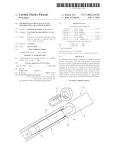
Micrometer screw guage patent |
Micrometer screw guage patent In 1890, Laroy Sunderland Starrett received a U.S. patent for his micrometer screw guage (No. 433,311), which is the form still familiar and indispensible to any machinist or person measuring small objects in a physics lab. Since 1881, he had worked to improve the micrometers then existing. His design had a vernier scale, a smaller head, a locking device and a small knob extending from the barrel to enable quick rotation while closing the initial gap to the inserted object being measured. By 1899, his micrometer was available in a one-inch size for $6.50, including a leather case. He took out many other patents for the tools he invented or improved, and established a substantial tool manufacturing business. |
|
06 Aug 1890

Auburn Prison |
Auburn Prison (technology) At Auburn Prison in New York, William Kemmler becomes the first person to be executed in the AC electric chair. |
|
15 Aug 1890

Elvin Morton Jellinek |
birth Elvin Morton Jellinek Born 15 Aug 1890; died 22 Oct 1963 at age 73. Elvin Morton Jellinek was an American physiologist who was a pioneer in the scientific study of the nature and causes of alcoholism and in descriptions of its symptomatology. He was an early proponent of the disease theory of alcoholism, arguing with great persuasiveness that alcoholics should be treated as sick people. Jellinek gathered and summarized his own research and that of others in the important and authoritative works Alcohol Explored (1942) and The Disease Concept of Alcoholism (1960). In the latter book, Jellinek also recognized that some features of the disease (e.g., inability to abstain and loss of control) were shaped by cultural factors. |
|
30 Aug 1890
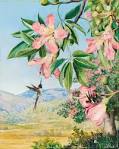
Marianne North |
death Marianne North Marianne North (born 1830), English botanist. |
|
25 Sep 1890
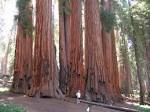
Sequoia National Park |
Sequoia National Park (biology) Sequoia National Park created in the United States. |
|
30 Sep 1890
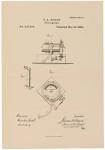
Edison patents |
Edison patents In 1890, Thomas A. Edison was granted U.S. patent No. 437422 for telegraphy, Nos. 437423,-4,-6 for a phonograph; No. 437425 for a phonograph-recorder; No. 437427 for a "Method of Making Phonograph Blanks"; No. 437428 for a "Propelling Device for Electrical Cars"; and No. 437429 for a phonogram blank. |
|
01 Oct 1890
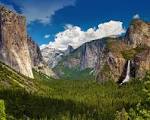
Yosemite National Park |
Yosemite National Park (biology) Yosemite National Park created in the United States. |
|
09 Oct 1890

Clément Ader |
Clément Ader (technology) The first brief flight of Clément Ader's steam-powered fixed-wing aircraft Eole takes place in Satory, France. It flies uncontrolled approximately 50 m (160 ft) at a height of 20 cm, the first take-off of a powered airplane solely under its own power. |
|
12 Dec 1890

Kazimierz Ajdukiewicz |
birth Kazimierz Ajdukiewicz Born 12 Dec 1890; died 12 Apr 1963 at age 72. Polish logician and semanticist who was the chief contributor to the Warsaw school of philosophy and logic, and is credited with developing in 1920 the first deductive theory for the study of logic based on syntax. The dominant theme of Ajdukiewicz's thought was the problem of the dependence of our knowledge and conception of knowledge on language. His main contributions are in the field of logical syntax (with the theory of semantical categories) and in epistemology, with the so-called “radical conventionalism,” a doctrine where he claimed that there exist conceptual apparatuses which are not intertranslatable and that scientific knowledge grows through the replacement of one such conceptual apparatus by another. |
|
20 Dec 1890
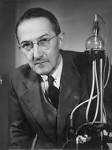
Jaroslav Heyrovský |
birth Jaroslav Heyrovský Jaroslav Heyrovský (died 1967), Czech chemist. |
|
21 Dec 1890

Hermann Joseph Muller |
birth Hermann Joseph Muller Hermann Joseph Muller (died 1967), American geneticist. |
|
26 Dec 1890

Heinrich Schliemann |
death Heinrich Schliemann Heinrich Schliemann (born 1822), German archaeologist. |